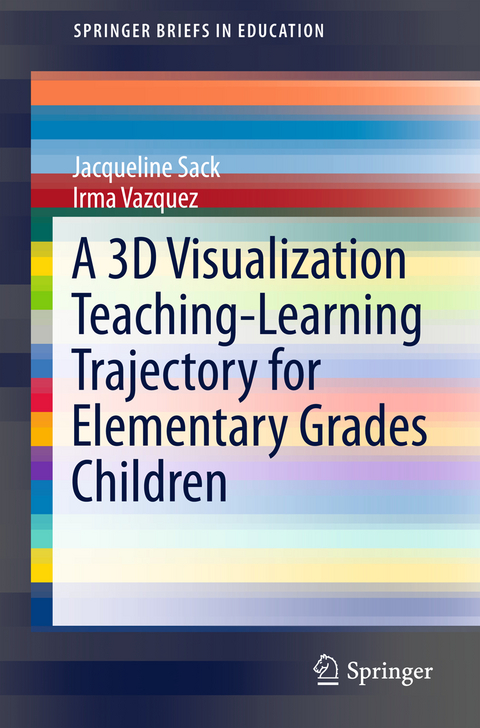
A 3D Visualization Teaching-Learning Trajectory for Elementary Grades Children
Springer International Publishing (Verlag)
978-3-319-29798-9 (ISBN)
1. Introduction/ Preface.- 1.1 Project's origins.- 1.2 Brief overview of the book's organization.- 2. Theoretical Frameworks.- 2.1 Why are visualization skills important?.- 2.2 Research methodology.- 2.3 Spatial Operational Capacity framework.- 2.4 School and classroom context.- 2.5 Pre-program interview.- 3. Introductory Activities.- 3.1 Four block houses.- 3.2 The Soma puzzle figures.- 3.3 Coordinating 2-Soma assembly figures.- 4. 2D to 3D to abstract top-view plans - Geocadabra interface.- 4.1 Learning to use Geocadabra - the Geobuddy manual.- 4.2 Explaining Difficult Figures in the Geocadabra manual.- 4.3 Front side top views.- 5. 3D to 2D via top-view numeric plans.- 5.1 Self-created task card puzzles; solving others' puzzle cards.- 5.2 Finding multiple solutions for each puzzle card.- 5.3 Invention of a coding system for assembly figures with holes or overhangs.- 5.4 Extended Construction Box - making sense of 3-space using shadows.- 5.5 Rectangular prisms and top-viewnumeric representations - making sense of the LWH volume formula.- 6. Connections to numeracy.- 6.1 Expanding and scaling the Soma cube.- 6.2 Permutations within cake patterns.
| Erscheinungsdatum | 08.10.2016 |
|---|---|
| Reihe/Serie | SpringerBriefs in Education |
| Zusatzinfo | VI, 44 p. 31 illus. |
| Verlagsort | Cham |
| Sprache | englisch |
| Maße | 155 x 235 mm |
| Themenwelt | Sozialwissenschaften ► Pädagogik ► Schulpädagogik / Grundschule |
| Schlagworte | 3D visualization • 3D visualization and numeracy connections • Abstract top-view numeric plan representations • Childhood Education • Education • elementary mathematics education • Front-side top view representations • Geocadabra Construction Box • Learning & Instruction • Learning and Instruction • Learning & Instruction • mathematics education • Spatial Operational Capacity (SOC) • Teaching and teacher education • Visualization of geometric objects • Visualization skills in elementary learning • Volume conceptualization using multiple representa • Volume conceptualization using multiple representations |
| ISBN-10 | 3-319-29798-8 / 3319297988 |
| ISBN-13 | 978-3-319-29798-9 / 9783319297989 |
| Zustand | Neuware |
| Informationen gemäß Produktsicherheitsverordnung (GPSR) | |
| Haben Sie eine Frage zum Produkt? |
aus dem Bereich


